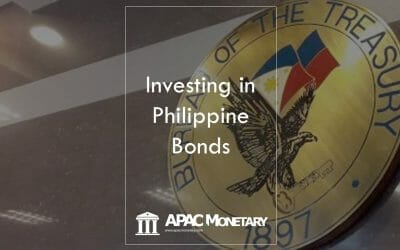Table of Contents
Investment is a way to generate an income over a period of time by buying and selling securities. The traditional way to invest is through mutual funds or individual stocks. Impact investing is a new way to invest that uses the power of capital markets to make positive changes in society. Impact investing focuses on investments with the potential to create social and environmental impact.
There are two main types of impact investing: social impact investing and environmental impact investing.
If you’re looking for a way to make money that positively impacts the world, you should consider impact investing.
There are many different impact investments, including investments in renewable energy, sustainable agriculture, feminist businesses, and green infrastructure projects.
What is impact investing?
Impact investing is a type of investment that focuses on a company or project’s social and environmental impacts. Impact investors are typically individuals or organizations who want to see companies make positive changes in their communities and the world. They invest money in these types of companies in order to create change.
One example of impact investment is the Tata Foundation’s investments in clean energy. Through their support, Tata has helped shift global energy consumption away from dirty sources like coal and oil towards more sustainable options like solar and wind power. This has had a positive impact on both the environment and the economy, reducing emissions while also creating jobs.
An important part of impact investment is ensuring that companies are held accountable for their actions. This means that impact investors often require companies they invest in to publish annual reports detailing their goals, actions are taken, and results.
Impact investing has become a popular way to invest, as it focuses on investments with the potential to create social and environmental impact. Impact investing is growing in popularity because it offers investors the opportunity to earn a profit while also creating change. There are a number of different types of impact investments, including:
- Social venture capital
- Environmental venture capital
- Community development finance institutions (CDFIs)
- For-profit enterprises that focus on sustainable practices
Non-profit organizations that work in vulnerable communities Impact investment has been shown to be successful in generating positive economic and social outcomes. For example, community development finance institutions (CDFIs) have been found to generate higher returns for their investors than traditional banks due to their ability to provide loans and other financial products targeted at low-income communities.
How Does Impact Investing Work?
Impact investors typically invest in companies and projects that they believe will greatly impact society or the environment. These investments may require more risk than traditional investments, but they can provide greater returns. Impact investors use a variety of methods to assess and evaluate the impact of potential investments. Some common methods include social responsibility assessments, environmental audits, and business model innovation evaluations.
Who are the Impact Investors?
There are several key players in the impact investing world.
The first is the investors. Impact investors are people who want to invest their money in companies and projects that they believe will have a positive impact on society. They use their capital to buy shares in companies that have a positive social or environmental impact and hope to profit from these investments over time.
The second group is the entrepreneurs. Many of the most successful impact investments have come from start-ups. These entrepreneurs see an opportunity to create products or services that can make a real difference in people’s lives, and they are willing to take on great risks. Examples are social enterprises and B-corporations, which are businesses that have a focus on social and/or environmental responsibility.
Last but certainly not least are the organizations that implement these projects and companies. They invest money in various ways, including direct financial support for projects and investments in companies with a positive social or environmental impact. Foundations, peer-to-peer lending, and crowdfunding are the main funding source for impact investments.
Today, impact investing has become one of the most popular ways to make a profit. Impact investing is an investment strategy that uses capital to create positive social or environmental impact. This can be done through investments in companies, projects, or funds. The main players in the impact investment space are foundations, investors, and social enterprises.
What are the Benefits of Impact Investing?
Unlike traditional investing, which is based on predicting future stock prices, impact investment focuses on making positive social and environmental impacts on the companies it invests in.
The benefits of impact investing are manifold. Impact investment provides financial returns that go beyond the traditional stock market, often making a larger impact on society. There are many benefits to impact investing, including:
- Long-term value: Impact investing can help create long-term shareholder value by driving innovation and growth;
- Public policy: It can improve public policy by influencing corporate behavior;
- Greater return potential: Impact investments offer higher return potential than traditional investments due to their ability to generate social and environmental benefits.
- Better risk-adjusted returns: Impact investments tend to have lower risk than traditional stocks, which makes them a safer investment choice.
- Sustainability: Many impact investments are designed to be environmentally sustainable, which helps protect both the environment and the investors’ money. By promoting sustainable practices and reducing carbon emissions, impact investments can help combat climate change. It can support sustainable development goals.
- Social responsibility: Impact investors want their money to do good globally, so many of them are committed to using it for social good.
- Poverty alleviation: By creating jobs and generating economic growth, impact investments can help reduce poverty rates.
- Increased financial returns: Impact investments typically have higher returns than traditional securities. This is likely because impact investments are typically more diversified and offer stability during times of market volatility.
- Greater social good: Impact investments can often have greater social good than traditional investment options. For example, a company that invests in renewable energy may generate economic benefits for its shareholders, improve air quality, and reduce carbon emissions.
What Type of Impact Investments Available?
There are a number of different types of impact investments available, and each has its own benefits and drawbacks.
Some of the most popular types of impact investments include renewable energy, social enterprise, and sustainable infrastructure.
Renewable energy is one of the most popular types of impact investments because it helps reduce emissions and build a more sustainable future. Impact investors can invest in solar power, wind turbines, and other forms of renewable energy to help reduce carbon emissions.
Social enterprise is another type of impact investment that helps solve social problems. These companies use innovative business models to solve issues such as poverty or hunger.
Sustainable infrastructure is another type of impact investment that invests in projects that create long-term environmental benefits. These projects can improve air quality, promote conservation, and create jobs in underserved communities.
What Can Returns Be Expected?
Impact investors may seek financial returns, but they are also looking for opportunities to make a social or environmental impact.
There are many factors that go into determining whether an investment will have a positive impact. Still, some key indicators include increased employment opportunities, decreased environmental waste, more sustainable business practices, and community development initiatives. In general, Impact Investing has generated good returns for its investors in recent years, with notable successes, including the growth of green infrastructure funds such as the Carbon Tracker Initiative and Renewable Energy Funds.
There are a number of ways that impact investors can achieve their goals. For example, they can invest in companies that create jobs, reduce poverty rates, and improve environmental sustainability. They can also invest in companies that provide renewable energy, combat climate change, and provide education to underserved communities.
A growing body of evidence suggests that impact investment can produce positive returns for investors. A 2010 study found that, on average, impact Investing outperformed conventional investments by about two percentage points per year over a 10-year period. Another study from 2013 found that, when analyzing data between 1997 and 2007, impacts Investing generated an annualized return of 11.1%, compared to 7% for mainstream equities.
Risks Involved in Impact Investing?
Impact investments can provide an opportunity to make a difference in the world while also generating regular income. There are many risks involved with impact investing, but the rewards can be substantial. However, there are a number of risks associated with impact investing that investors should be aware of.
First and foremost, impact investments are complex and risky. They can involve long-term bets on companies that may not succeed, and they often require a significant financial commitment.
Second, impact investments can be difficult to sell to traditional investors. For investors who are not familiar with the concept, impact investment can come across as risky and unfamiliar.
Third, impact investments tend to be less liquid than other asset classes.
Finally, impact investing is not without its critics. Many researchers have argued that impact investments are more a manifestation of philanthropy than an investment.
What are the Available Impact Investment Vehicles?
Impact investing is growing in popularity due to its potential to generate high returns with little risk. Some of the most popular impact investing vehicles include social enterprise investments, green energy investments, and market-based investments. There are many different types of impact investment vehicles, and each has its own benefits and drawbacks. However, it is important to do your research before making an impact investment, as there are a number of factors to consider.
What to Look for in an Impact Investment
Impact investments are a relatively new investment category that has been growing in popularity in recent years. Impact investments are made with the goal of creating social or environmental impact, which can improve human well-being. There are a few key things to look for when evaluating an impact investment:
- how much money is being invested
- what type of impact is being sought
- how long will it take to see the expected impact
- how sustainable the investment is
- whether there are any financial risks associated with the investment
- it is potential for returns
- how it will be structured
- the team behind it,
- the impact will have on society and the environment
It is important to consider its potential for returns when considering an impact investment. Impact investments typically offer higher yields than traditional investments, making them a good option for those looking for a high return on their investment. Additionally, impact investments may also have social or environmental benefits that make them desirable choices. To evaluate an impact investment, it is important to consider the potential returns and the social or environmental impacts associated with it. Impact Measurement The measurement of impact is a critical step toward assessing the potential benefits of an investment.
Impact Investment Strategies
There are a variety of different impact investment strategies, which can be broadly classified into three categories: social impact investment, environmental impact investment, and commercial impact investment.
Social impact investments aim to improve social outcomes, such as reducing poverty or improving education opportunities.
Environmental impact investments aim to protect the environment, for example, by reducing greenhouse gas emissions or improving energy efficiency.
Commercial impact investments target businesses that indirectly affect social or environmental outcomes, for example, through their supply chains or marketing practices.
Each of these types of impact investing has its own advantages and disadvantages. For example, social and environmental impacts may be more difficult to quantify than financial returns, but they can often be more important. Conversely, commercial impacts tend to be easier to measure but may not have as much long-term value.
How to Get Started with Impact Investing
There are many different types of impact investments, but they all have one thing in common: they are designed to impact society positively.
Here are some tips for getting started with impact investing:
- Do your homework. Impact investing is not a get-rich-quick scheme, so make sure you understand the risks involved before investing. Read up on the best practices for impact investing and find a firm that has an understanding of these principles. Do in-depth research. Impact investments can be complex, so it’s important to do your homework before you invest. Make sure you understand the investment and what it will do for society.
- Get involved. Get involved with an organization that values impact over profit, and give back by volunteering or donating your time and money. Impact investing isn’t about making money; it’s about making a difference in the world.
- Be patient. Impact investments can take time to pay off, so be patient and stay invested through good and bad times.
- Be persistent. The success of impact investment is determined by the cause’s quality, not the investment’s profitability. The more you invest in an organization that has the potential to make a difference, the more likely it is to succeed.
- Don t expect a fast return on your investment. Impact investments can take years to pay off, so don t give up if you do not see the returns you expected right away. But remember that impact investments can have a powerful and lasting effect on the world, so hang in there!
- Set your boundaries. While impact investments can be risky, it’s important to set limits on how much you risk. If something doesn’t feel right, don’t invest!
- Be sure you understand the risk. Impact investments often have high risk, so it’s important to be sure of what you’re investing in.
- Be mindful of fees. Impact investments can be expensive, so make sure you are aware of all the fees associated with your investment.
The Future of Impact Investing
There is no doubt that impact investing is becoming increasingly popular. In 2017, impact investments accounted for $227 billion in total assets under management (AUM) and were projected to grow to $3.2 trillion by 2025, according to a report from the World Impact Investing Network (WIIN). What makes impact investing so unique is its ability to have a significant social and environmental impact without necessarily sacrificing financial returns. Here are six ways that impact investors are helping create a more sustainable future:
- Increasingly, businesses are recognizing the importance of social and environmental responsibility. For example, Mastercard has committed to using 100% renewable energy by 2030. Walmart has pledged to increase its grocery sales of healthier foods and reduce food waste. Unilever is working on developing sustainable packaging solutions.
- Impact investing is growing in popularity. According to the Global Impact Investor Network, the number of impact investors grew by 25% each year from 2011 to 2015. Impact investment assets grew by a whopping 44%, reaching $227 billion by 2015.
- The impact investing trend has grown beyond traditional financial investments. Impact investing is now being used in areas such as clean energy, manufacturing, and health care. According to the Global Impact Investor Network, investors are increasingly looking to support companies that promote social and environmental causes.
The future of impact investing is bright. It is an investment discipline that seeks to impact social or environmental positively. Impact investment has grown in popularity in recent years, and there are now more than 1,500 funds that specialize in this type of investment. This growth is likely due to the potential for impact investing in providing high returns while also having low volatility. As the world becomes increasingly complex and societies continue to face pressing challenges, impact investing offers a unique way to address these issues.
Conclusion: Is impact investing right for you?
Impact investing is a new way of making money that focuses on companies and projects that positively impact society or the environment. While it may seem like a recent development, the concept has actually been around for quite some time. It is becoming more popular as people become more interested in doing something good for the world while also making money.
The future of impact investing is promising, and there is much opportunity for both individuals and institutions to make a positive difference. If you’re interested in getting involved in impact investing, you should know a few things.











